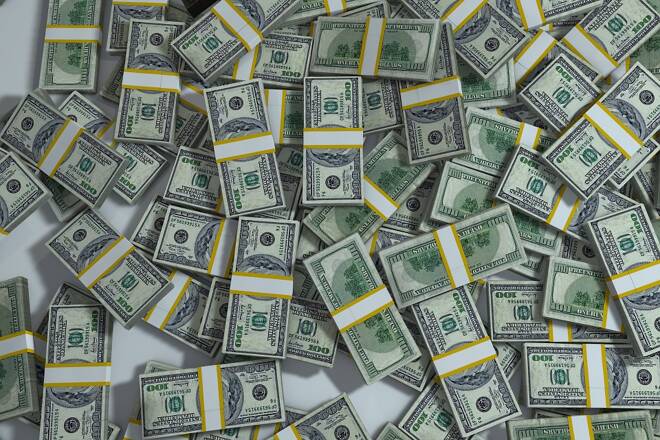Advertisement
Advertisement
U.S. Dollar Surges to Multi-month High as Rate Hike Expectations Increase
By:
The Forex market was relatively calm following Tuesday’s strong surge by the U.S. Dollar. The dollar was boosted by strong U.S. economic data. According
The Forex market was relatively calm following Tuesday’s strong surge by the U.S. Dollar. The dollar was boosted by strong U.S. economic data. According to the Commerce Department, U.S. housing starts surged 4.8 percent to a seasonally adjusted annual pace of 1.19 million units in June, supporting the perception that the economy is strengthening.
The housing data, coupled with a robust U.S. labor market and solid retail sales, indicates the economy may be heating up enough for the Fed to implement at least one interest rate hike before the end of the year. Talk of higher rates is making the Greenback a more attractive investment to foreign buyers.
[wibbitz]b586fdc4c5d7b4c6cb4215426aa0e99cc[/wibbitz]
According to the CME Group’s FedWatch tool, investors now see almost a 50/50 chance the Fed will raise rates by December. This is substantially up from just a few weeks ago when the indicator showed only a 20 percent chance of a rate hike.
On Tuesday, the dollar index, which tracks the dollar against a basket of six major currencies, rose to its highest level since March 10. There was little follow-through to the upside early Wednesday, with the index hitting a high of 97.23, before retreating to 97.085, down 0.023 or -0.02%. Currently US Dollar index is trading at 97.30.
Aside from the movement in the U.S. Dollar, most of the major currency markets remain relatively quiet, mostly due to the lack of fresh economic data. However, from the quiet should come increased volatility later today when the U.K. releases data on employment and later in the week with the European Central Bank’s press conference on Thursday and Manufacturing and Service PMI data from the U.K., Euro Zone and the U.S.
There was some giveback in the U.S. Dollar/Japanese Yen trade early Wednesday with the USD/JPY trading at 106.503, down 0.076 or -0.07%. This Forex pair has been finding strength lately from the unwinding of safe-haven bids in the Yen as the initial shock from the Brexit vote has been reduced.
The Yen has been further pressured by expectations of fresh stimulus from the Bank of Japan. Traders are anticipating the announcement of additional BOJ easing at its July 28-29 meeting.
USD/JPY is trading flat on Wednesday morning at 106.13.
The Australian Dollar traded relatively flat against the U.S. Dollar early Wednesday, following Tuesday’s steep sell-off that was triggered by dovish minutes from the Reserve Bank of Australia’s last meeting.
In its minutes, the RBA suggested that an August interest rate cut is still a possibility. Its decision to cut rates to a new historical low will likely be determined by the Consumer Inflation numbers due to be released later in the month. The last trade put the AUD/USD at .7476, down 0.0003 or -0.03%.
Earlier in the session, trader showed little reaction to the latest Westpac Melbourne Institute Leading Index for June which came in at -0.22% m/m versus +0.21% last month.
The New Zealand Dollar is trying to recover from its five day slide. There was no follow-through to the downside early Wednesday, which suggests profit-taking may be taking place. The NZD/USD is up 0.0005, or +0.07% at .7057. The Forex pair was pressured earlier in the week by increased expectations for an interest rate cut by the Reserve Bank of New Zealand.
On Tuesday, traders were unmoved by the latest Global Dairy Trade (GDT) data. It came out unchanged, following a 0.4% decline in prices in the previous report.
About the Author
James Hyerczykauthor
James is a Florida-based technical analyst, market researcher, educator and trader with 35+ years of experience. He is an expert in the area of patterns, price and time analysis as it applies to futures, Forex, and stocks.
Did you find this article useful?
Latest news and analysis
Advertisement
